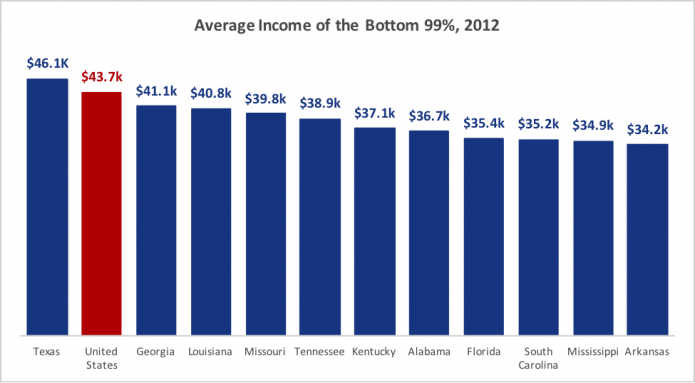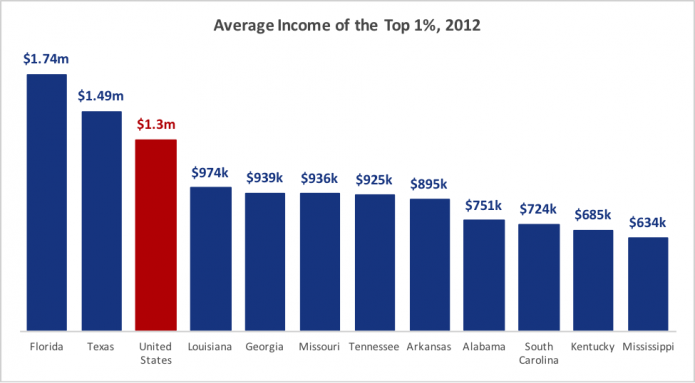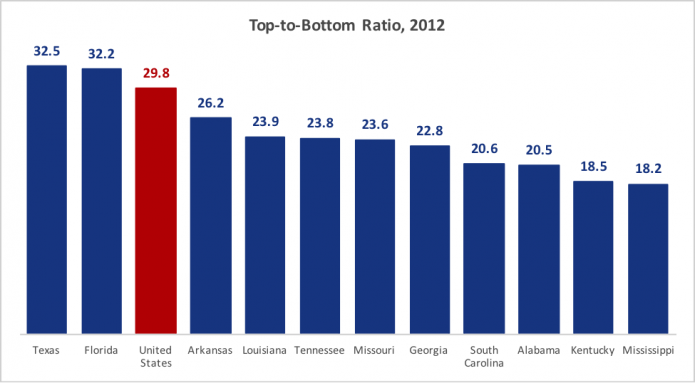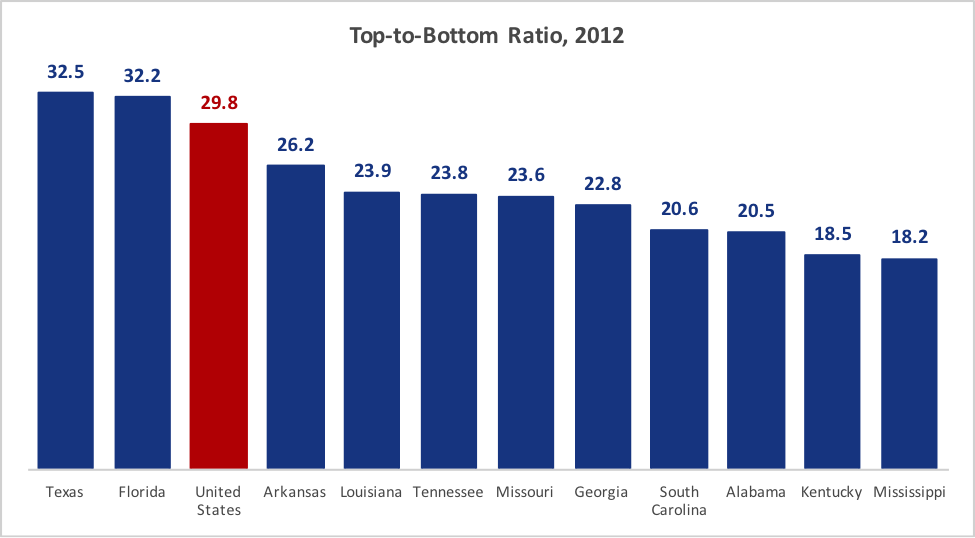
The “Super Tuesday” primaries have always lived up to the grandeur of their label. Super Tuesday offers candidates more delegates than any other date on the primary calendar, this year with 661 Republican and 865 Democratic delegates on the line.
“Super Tuesday” accentuates our athletic imagination just as much as our political fervor. Almost everyone seems to be calling this year’s set of contests the “SEC Primary” in honor of the collegiate sports conference that dominates most of the Southeast.
The SEC — the Southeastern Conference — is famous for nationally renowned football programs, and, politically, five of the eleven states with schools in the SEC are holding primaries on this year’s Super Tuesday.
The Southeast also ranks among the most unequal regions in the United States. We decided to spotlight income inequality in the SEC states both voting on Super Tuesday (Arkansas, Alabama, Texas, Georgia, and Tennessee) as well as those that aren’t (South Carolina, Florida, Louisiana, Mississippi, Missouri, and Kentucky).
An Economic Policy Institute report illuminates how unequal life in the Southeast can be.
The bottom 99 percent of income earners in each Southern state, excluding Texas, make less than the national average. Race-to-the-bottom economic policies explain much of this low-income reality. Southern power brokers, for instance, have long done everything they could to discourage trade union organizing.

According to the Bureau of Labor Statistics, South Carolina’s rate of union membership runs more than five times under the national average. All Southern states have below-national-average rates of union membership.

The rich in Florida and Texas, meanwhile, make substantially more than the national average. The Florida and Texas top 1 percent make 34 percent and 15 percent more than the national average top 1 percent income. With low incomes in the bottom 99 percent and higher-than-average incomes for the richest, these two states rank as among the most unequal in the country.

For every $32.50 and $32.20 made by someone in the top 1 percent of earners in Texas and Florida, the bottom 99 percent of earners took in just $1.
Florida and Texas make up only two of eleven SEC states, but, combined, their populations total nearly 47 million. Compare these millions to the combined population of 47.4 million in the next nine primary states after Super Tuesday. No wonder pundits see Texas and Florida as the biggest Super Tuesday prizes. Florida will be allotting 240 Democratic delegates and 99 Republican delegates, while Texas will distribute 155 Republican delegates and 222 Democratic delegates.
Voters in the SEC Primary should consider what each candidate offers in the way of addressing income inequality on a local, state, and national scale. There’s much the Presidential candidates can pledge to do in order to combat inequality: reforming Wall Street, making college education free, boosting African American labor, or investing in a green economy would all be viable alternatives to the status quo that would boost wages for all and reduce inequality.
